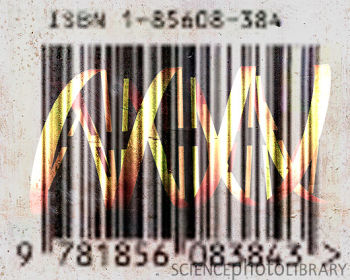近日首都师范大学生科院张爱兵教授在著名的进化、生态学国际期刊《分子生态学》(Molecular Ecology)上发表了DNA条形码研究新成果。

张爱兵教授系首都师范大学“海外引进人才”,现为首都师范大学生命科学学院分子生态学学科带头人,博士生导师。其领导的研究团队致力于DNA条形码理论与应用、有害生物的分子识别和生态安全,目前承担有国家自然科学基金面上项目等,是国际DNA条形码理论研究领域少数几个研究团队之一,在相关领域具有较强的国际影响力。
DNA条形码研究是国际生态学、进化生物学领域新兴的交叉研究领域(分子生物学,经典分类学,生态学以及计算机科学的交叉),由加拿大科学家P.Hebert于2003年提出,在国际生物学相关领域引起广泛关注。DNA条形码研究极大地促进了生物多样性保护、外来入侵和有害生物分子识别等相关领域的研究。
在这篇文章中,张教授将模糊数学理论引入到DNA条形码研究领域,提出了基于模糊成员关系与最小遗传距离的DNA物种识别新方法。他通过实例研究和超过5000次的计算机模拟,证明该方法明显优于常用的基于Bayesian理论的方法和基于NJ建树的方法,尤其能够降低DNA条形码识别中的假阳性错误。
此研究是张爱兵教授继2008年将人工智能的思想引入到DNA条形码(DNA barcoding)研究领域后,在该领域内取得的又一次理论突破。
生物探索推荐英文论文摘要:
A fuzzy-set-theory-based approach to analyse species membership in DNA barcoding
Reliable assignment of an unknown query sequence to its correct species remains a methodological problem for the growing field of DNA barcoding. While great advances have been achieved recently, species identification from barcodes can still be unreliable if the relevant biodiversity has been insufficiently sampled. We here propose a new notion of species membership for DNA barcoding—fuzzy membership, based on fuzzy set theory—and illustrate its successful application to four real data sets (bats, fishes, butterflies and flies) with more than 5000 random simulations. Two of the data sets comprise especially dense species/population-level samples. In comparison with current DNA barcoding methods, the newly proposed minimum distance (MD) plus fuzzy set approach, and another computationally simple method, ‘best close match’, outperform two computationally sophisticated Bayesian and BootstrapNJ methods. The new method proposed here has great power in reducing false-positive species identification compared with other methods when conspecifics of the query are absent from the reference database.







